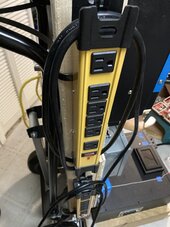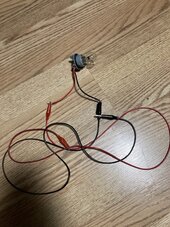Brucey
Solar Wizard
I think the UL listed ones have a taller wire box to give you more room. But then it's bigger overall and you are trying to be compact.



your inlet just a standard 15A
Sorry I meant the grid input to the mp2, on the other side with the extension cord?Yes. Each are ETL rated breakers on a 15 amp breaker in the panel. Redundancy in motion
could put it to work running a window air conditioner unit or resistance heater or something between real tasks.
Have you put that Beast on a scale ? I
little details" that can save one a lot of "pains". That really says a lot.
am curious what that whole kit weighs all said & done
HEAVY



